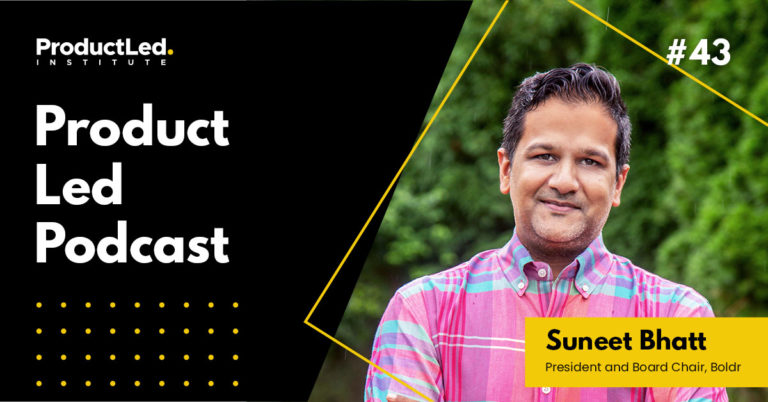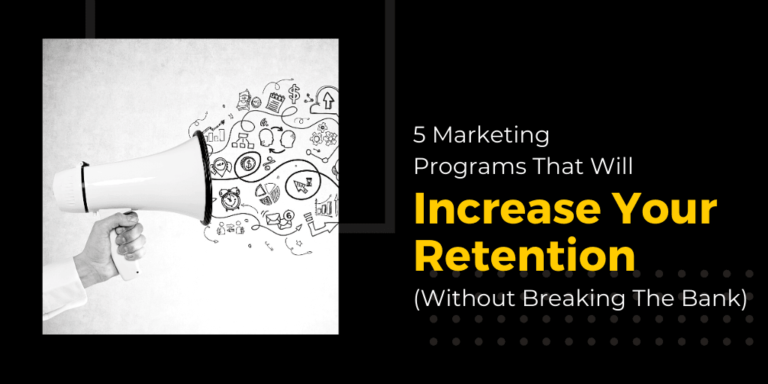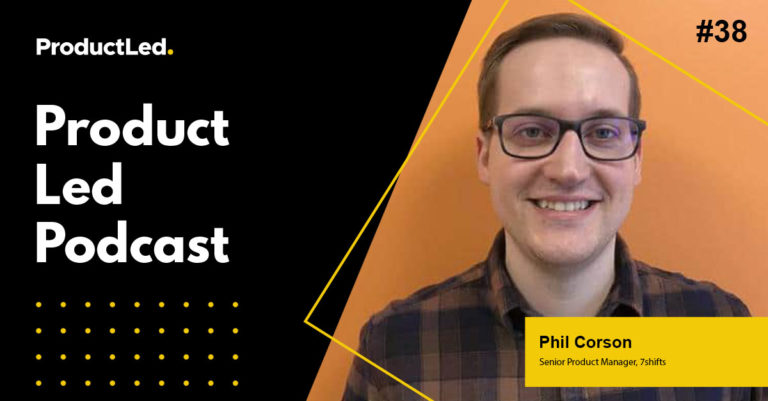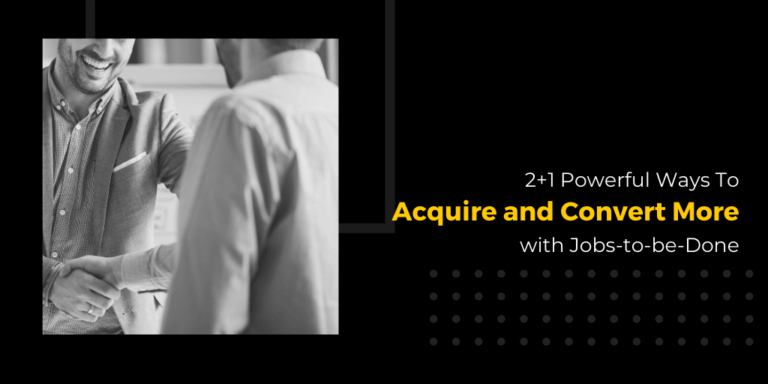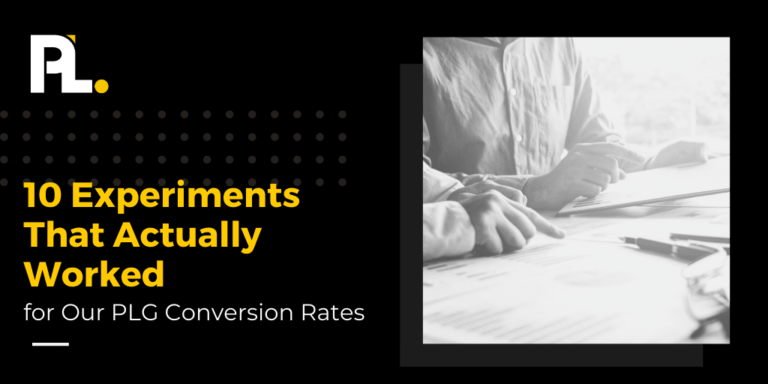How do you tip the scales in converting free trial users into devoted paying customers?
Your new user isn't just signing up to explore your product; they have a purpose — to witness what your product empowers them to achieve.
Take Emma, for example.
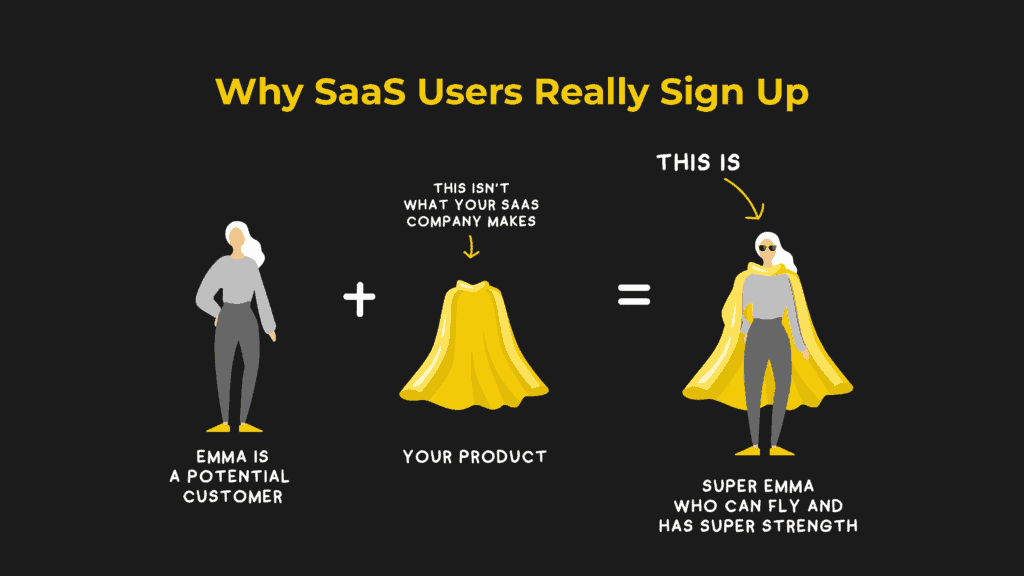
Users like Emma aren't merely admiring the cape; they're exclaiming, “Wow, I can fly and have super strength. I want it.”
If there’s one takeaway from this article, it’s this: Having the best product on the market won’t matter if you don’t guide users toward experiencing a key outcome. Without it, everyone will think your product sucks.
In this article, I’m going to lay out actionable insights to elevate your SaaS free trial conversion rate and propel sustainable growth. We'll dive into essential benchmarks, value delivery to users, and three pivotal steps to amplify your SaaS free trial conversion rates for heightened product-led revenue.
Let’s go.
Free Trial Conversion Benchmarks
Tracking your free trial conversion rate is a crucial SaaS metric that can help you understand the effectiveness of your free trial. However, it's also important to consider other tracking metrics to get a more accurate picture of your conversion rate.
Here are some general benchmarks to keep in mind:
- Industry Average: The average conversion rate for your industry gives you a baseline to compare your conversion rate against and identify areas for improvement.
- Internal Benchmark: Tracking your conversion rate over time can help you see if your efforts to improve it are working. Set goals and monitor your progress to ensure your SaaS company moves in the right direction.
- Segmented Conversion Rates: Look at your conversion rate for different segments of your free trial users to help you identify areas where you may struggle to convert users into paying customers.
Free Trail Model Conversion Averages
Free trial models vary in duration, features, and restrictions, making them better geared for specific product-led scenarios.
Let’s look at how conversion averages compare from two popular free trial strategies, Opt-In and Opt-Out.
Opt-In Free Trial
Opt-in trials tend to onboard the largest number of users because of the ease of sign-up, often including an email and password to get started.
- Average Conversion: The Opt-In Free Trial has a conversion rate average of 25%.
- Opt-In Free Trials are best for new products, startups trying to establish their products, and companies testing to improve their conversion rate.
Opt-Out Free Trial
In the Opt-Out Free Trial model, users stop the signup and input their credit card information, creating friction.
- Average Conversion: Opt-In has a conversion rate of about 60%. This model has higher trial-to-paid conversion rates as it doesn't bring in users who use but never buy.
- Opt-Out trials are better for payment, established companies that can ensure the privacy of users' payment details, and companies with a solid support team ready to assist users.
How to Calculate SaaS Conversion Rate From Free Trial
To calculate the conversion rate, divide the number of users who convert into paying customers by the total number of users who signed up for the free trial, and then multiply by 100 to get the percentage.
The formula is:
SaaS Free Trial Conversion Rate = (# of Paying Customers / # of Free Trial Sign-ups) x 100.
This calculation will give you the percentage of users who converted into paying customers during the free trial period.
Why Free Trial Conversion Is Important
Conversion rates are important because they provide insights into the effectiveness of a SaaS company’s free model in converting users into paying customers.
A high conversion rate indicates that the free trial successfully showcases the product's value and convinces users to purchase.
On the other hand, a low conversion rate may indicate that the free trial could be more effective in demonstrating the value of the product or that there are barriers preventing users from converting.
Ensuring Value Delivery to Users of Free Products is Essential
A free trial is a promise of value that you’re letting people try out for themselves.
You can have the best product in the market, but if you don't help people experience a key outcome, everyone will think your product sucks.
Companies that can’t deliver on this promise hurt their brand and sales numbers.
However, if you can deliver on your promise, you can provide an impressive first impression that leaves your user wanting to upgrade.
3 Pivitol Steps to Convert More Free Trial Users
The secret sauce to getting more users to pay for your SaaS product lies in elevating their motivation, optimizing the conversion process, and ultimately building a habit-forming product.
Step 1: Increase 10x Your User’s Motivation
You can change any behavior if you have the right mix of motivation, ability, and triggers.
Let me start with a short story to demonstrate.
When I went to the University of Waterloo in Canada, I had to take one mandatory Statistics 101 course. I hated statistics but knew I had to pass it for my degree.
So, when I was told I had to learn SPSS (IBM’s famously complex statistics tool), I reluctantly rose to the challenge and was able to blunder through the terrible user experience.
By the end of the course, I had a grudge against SPSS but was relatively happy knowing that I’d never have to touch the tool again after the course (if I passed).
So, I studied my butt off and passed the course.
I thought it was luck, but I had three things working for me:
- I was highly motivated to pass this course.
- Despite my low ability, I was stubborn and blundered through the software’s terrible layout.
- I had constant triggers from my peers and class schedule to learn SPSS.
As a result, I put in the work to figure it out.
This story isn’t unique to me.
BJ Fogg Behavior Research
BJ Fogg, a researcher from Stanford University, conducted an incredible study that demonstrates how, with the appropriate combination of motivation, ability, and triggers, you can effectively modify any behavior.
The graph below shows four common scenarios that all SaaS products share.
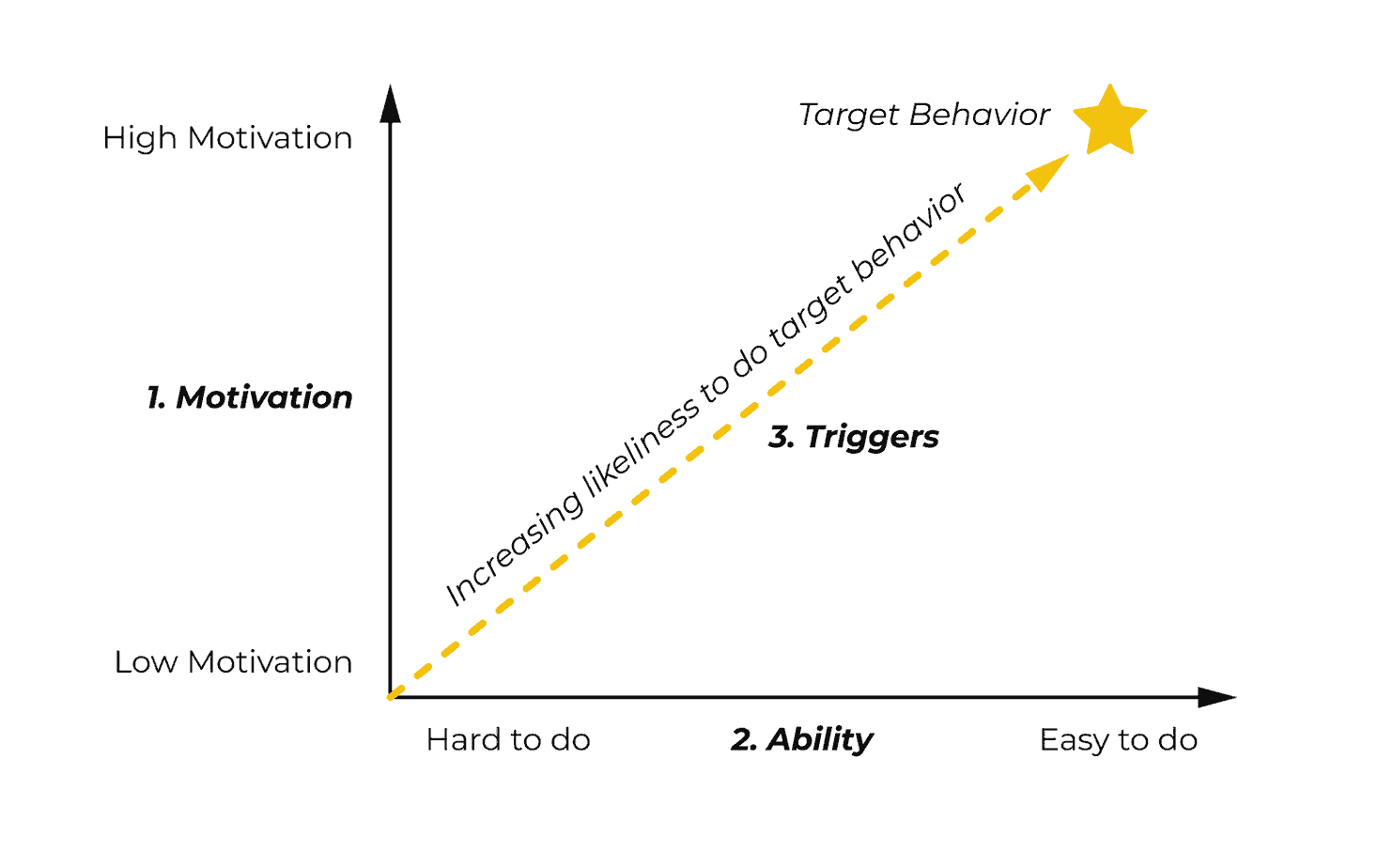
Let’s break down what each scenario means about user behavior:
- Scenario #1: Your user has low motivation and low ability. Sorry, but with this scenario, you’ll never help them tackle a new behavior.
- Scenario #2: Your user has a high motivation and low ability. This scenario means you can afford a terrible user experience like IBM SPSS and still get people to change. It could be better, but not the worst outcome, either.
- Scenario #3: Your user has low motivation and high ability. This scenario means your user can accomplish the target behavior easily but could flee at any sign of friction or even when hungry. Who knows!
- Scenario #4: This is the outcome I want you to optimize for. Your users have a high motivation and high ability. This scenario means that you’ll be able to help the most people.
If you’re not Scenario #4, you’ve got an ugly leak in your SaaS business that needs more than some duct tape.
Increasing User Motivation
So, how do you increase the motivation of each user?
Be relevant.
Seriously. There is no shortcut around this one.
You need to speak your customer’s language and know what frustrates them to action.
Beyond customer research, here are a few simple ways you can immediately improve your user’s motivation:
- Restating your product’s value proposition on your free trial signup page
- Adding personalization to your welcome email
- Adding a sense of humor throughout your onboarding
- Using checklists in your onboarding mail
- Celebrating quick wins in your product (i.e., Mailchimp’s infamous high-five when you send out a campaign)
- Showcasing the stories of people experiencing a meaningful key outcome in your product
Key Takeaway
While we can motivate users to complete actions, it's often easier and more cost-effective to optimize your free trial experience.
Any product significantly reducing the steps to complete a task will enjoy high adoption rates (i.e., Amazon One-Click button).
Step 2: Optimize to Convert Free Trial Users
In your pursuit of optimizing your SaaS business to convert free trial users into paying customers, consider this scenario:
You need to clear one foot of snow from your driveway in Canada during winter. You have two tools: a 10 kg bag of salt and a shovel.
What would be your choice?
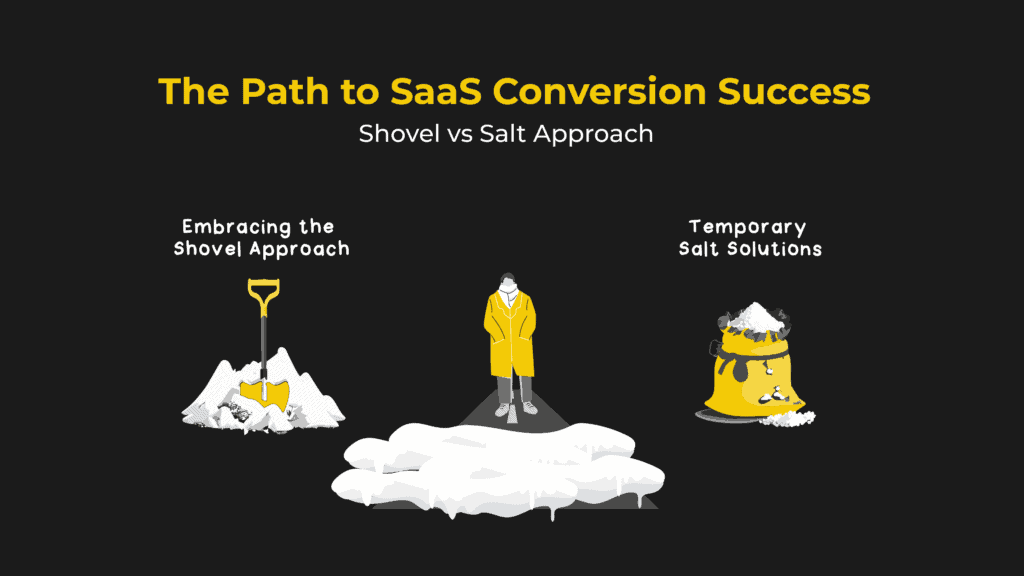
Chances are, like most Canadians, you'd opt for the shovel, as it's a more efficient way to clear the snow quickly. Relying solely on salt might seem like a solution, but you'll likely run out of salt before your driveway is completely cleared, not to mention the expensive upkeep it entails throughout the winter.
So, why this analogy?
In the world of SaaS, it's surprising how many companies make the mistake of choosing the "salt" approach rather than the "shovel" when it comes to helping new users achieve a critical outcome in their product.
Imagine you're the CEO of a SaaS business aiming to convert more free trial users into paying customers.
Does the following situation sound familiar?
- The Marketing team promises more to each prospect to boost conversions (SALT).
- The Sales team improves their follow-up times (SALT).
- The Product team focuses on adding more features (SALT).
Each of these "solutions" might provide some help, but they often miss the mark. What's missing here?
What needs to be improved is the understanding of the user's perspective.
After signing up for a free trial, users can only access the product once they activate their free trial account in their email provider. Then, the user must re-login and is left to "figure out" the product on their own.
At this point, your user feels overwhelmed and lost, like being neck-deep in snow. They don't know where to turn, who can assist them, or what steps to take. They only want to return to a comfortable, welcoming environment.
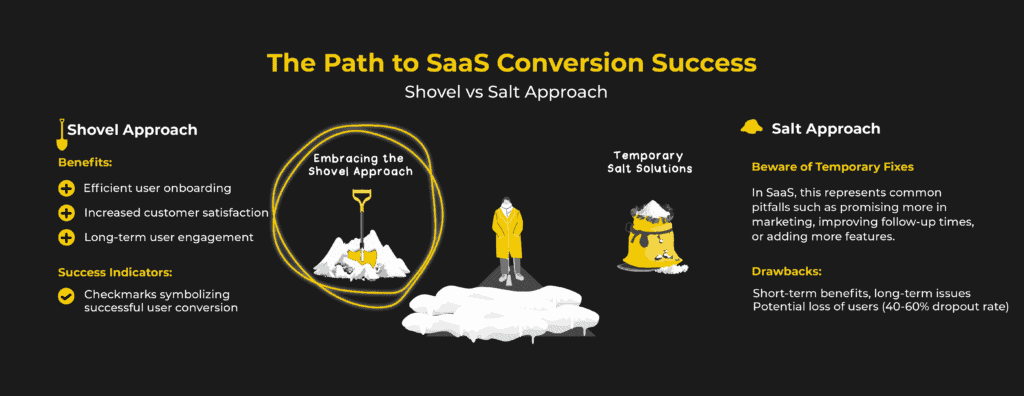
Now, here's the question:
Are you going to choose the "salt" approach to help them?
Or will you be their savior and provide them with a clear path, like shoveling snow to show them the way?
If you choose salt, you can say goodbye to 40-60% of users who sign up for your free trial. According to Intercom, these users will use your product once and never return.
Leveraging an Analysis Checklist to Optimize Conversion
Consider using a straightforward Gut Analysis Checklist before and after signing up for the free trial for some quick wins.
The beauty of this checklist is that anyone can utilize it to generate excellent ideas for enhancing your free trial's conversion rate to paid.
To make the most of the Gut Analysis Checklist, ask yourself these questions while navigating the product sign-up experience.
Before Signup Checklist:
- Do all touchpoints have a consistent narrative thread from one to the other?
- Does each touchpoint help the user accomplish a functional, emotional, or social job they want to do?
- Is each form field you ask for on your free trial signup page necessary?
- Does every touchpoint promise an improvement to the user’s life?
- Are points of anxiety & struggle directly addressed wherever they arise?
- Is the product’s personality engaging and consistent across the board?
- Is the product’s credibility established with social proof, testimonials, and real-world outcomes?
- Are all unnecessary points of friction and distraction removed from critical workflows?
After Signup Checklist:
- Does the first-run experience in the product lead to a specific, relevant, meaningful, quick win?
- Is the workflow for the first-run experience as streamlined as humanly possible?
- Is the users’ time spent floating in “limbo” states managed & limited?
- Are tooltip tours used to help drive the user to a quick win in the product?
- Are social and directional cues provided to indicate highly valued behaviors?
- What key tasks, such as Mailchimp's high-five, are reciprocated with a success state?
- Are lifecycle emails positioned to help users achieve a meaningful outcome in the product?
Key Takeaway
If you go through each of these questions, I have no doubt you’ll at least find one or two opportunities to improve your free trial to paid conversion rate.
While we can try to improve our free trial conversion rate, it won’t mean much if we can’t build a habit-forming product.
Step 3: Build Habit-Forming Products
Building habit-forming products refers to creating SaaS products designed to become integral to a user's daily or regular routine. The goal is to make the product so valuable and essential that users use it consistently.
Habit-forming products in SaaS have specific characteristics and design principles that encourage user engagement and retention. These products aim to create a strong bond between the user and the software, making it difficult for the user to imagine their workflow or routine without it.
The Hooked Cycle
Behavioral design consultant and bestselling author Nir Eyal spent years figuring out how to build habit-forming products. In his book, Hooked, Nir lays out a simple framework called the Hooked Cycle, which consists of four principles: trigger, action, variable reward, and investment.
Each part works together to help people build habits in their day-to-day lives.
By incorporating these principles, product-led companies aim to create a loyal user base that continues to use their product consistently, ultimately driving customer retention and long-term success.
Here’s a great breakdown of each of the four parts of the Hooked Cycle by Abi Noda:
Trigger
What are users feeling and doing the moment before they would use your product? What is the emotional need they are solving with your product? Facebook, for example, relieves us of the feeling of wanting to belong and be important to others. Email relieves us of uncertainty and staying connected. Understanding these questions is the basis for designing a good customer acquisition model and re-engagement strategies (e.g., email notifications).
Action
For a product to be sticky, it has to be simple and easy to use to avoid barriers to adoption and usage. While we can also try to motivate users to complete actions, it's easier and usually more effective to reduce the required effort.
Variable Reward
Providing variable rewards after actions excite users to use and return to your product. The three types of rewards are:
- Material (i.e., saving money)
- Social (i.e., feeling accepted or important)
- Completion (i.e., clearing out your inbox).
Investment
Humans place more value on things they've committed their own labor to. Thus, sticky products should become more valuable over time based on what's been put in the user (e.g., amassing followers on Twitter).
Hooked Cycle Graph
In the Hooked Cycle graph below, you start with a trigger, followed by an action, a reward, and an additional investment. To have a habit-forming product, you must consistently repeat this loop to reinforce your product with a specific trigger.
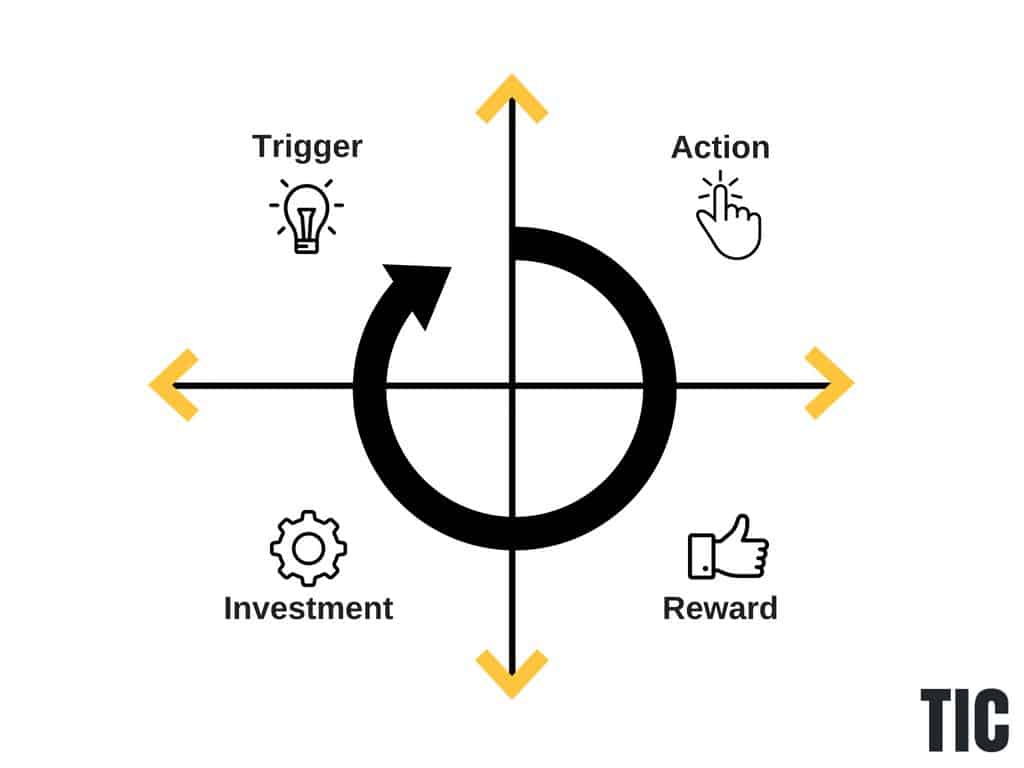
When it comes to using triggers in your business, you should know that there are two main types: external and internal triggers.
External triggers are arguably the easiest ones to control on your end.
Here are just a few external triggers:
- Paid Triggers - Advertising
- Earned Triggers - Public and media relations
- Relationship Triggers - Word-of-mouth marketing
Internal triggers are much trickier to pinpoint and bake into your product but a million times more powerful.
Internal triggers manifest automatically in your mind.
Think about it.
What is (5 x 7807) / 13,123 = ?
If you’re like most people in the developed world, you might have thought about checking your phone calculator.
That is, no doubt, an internal trigger that you’ve honed over the years.
However, if I sent you an email telling you to use the calculator app on your phone, you’d quickly tune it out if it wasn’t immediately relevant.
When thinking about building a habit-forming product, I find it helps to pretend you’re starting a fire.
External triggers are your kindling and have a short lifespan but are needed initially, whereas internal triggers are your thick logs that will last for a long time.
Key Takeaway
Both triggers are fundamental to building a fire, but you must know when to use both.
Build external triggers for onboarding users to improve your free trial conversion rate. Design a strategy around internal triggers for satisfying and retaining users.
Free Trial Conversion Metrics
To understand your SaaS free trial conversion rates, tracking the proper conversion metrics is essential. Analyzing these metrics allows you to gain valuable insights into your trial performance and make data-driven decisions.
Essential conversion metrics to consider include:
- Activation Rate: This metric measures the percentage of trial users who complete the initial setup or onboarding process. A high activation rate indicates that users are engaged and finding value in your product.
- Engagement Rate: This metric measures the user activity level during the trial period. It includes actions such as logins, feature usage, and interactions with your product. A high engagement rate suggests that users actively explore your product and are more likely to convert.
- Conversion Rate: This metric measures the percentage of trial users who convert to paid customers. It is a key indicator of your trial's effectiveness in driving revenue. A higher conversion rate indicates that your trial successfully convinces users to upgrade.
Common Mistakes to Avoid in Free Trial Conversion Measurement
Measuring free trial conversion rates is essential for gaining meaningful insights and making informed decisions. However, businesses must often correct three common mistakes when measuring free trial conversion rates.
Not Tracking the Entire Customer Journey
To accurately measure conversion rates, businesses should track users from the moment they sign up for the free trial to the point of conversion or churn. This includes tracking user behavior, engagement metrics, and any interactions with the product or service.
Not Segmenting the Data Properly
Businesses should segment their data based on various factors such as demographics, user behavior, or referral sources to better understand conversion rates. Doing so allows companies to identify patterns and trends that can help optimize their free trial conversion rates.
Not Considering the Timing of Their Measurements
Conversion rates can fluctuate, so measuring and analyzing them over a consistent period, such as monthly or quarterly, is essential. This allows businesses to identify trends and make data-driven decisions to improve their free trial conversion rates.
Tie Everything Together to Improve Free Trial Conversion
A free trial is a promise of value that you’re letting people try out for themselves.
Companies that can’t deliver on this promise hurt their brand and sales numbers.
However, if you can deliver on your promise, you can deliver an impressive first impression that leaves your user wanting to upgrade.
One thing I hope you’re not inferring from this article is that you need to be a self-service business. You can have a successful software business without being self-service.
For instance, if you have a very complex and expensive product, it can often be more beneficial not to employ a self-service model (see yellow zone below).
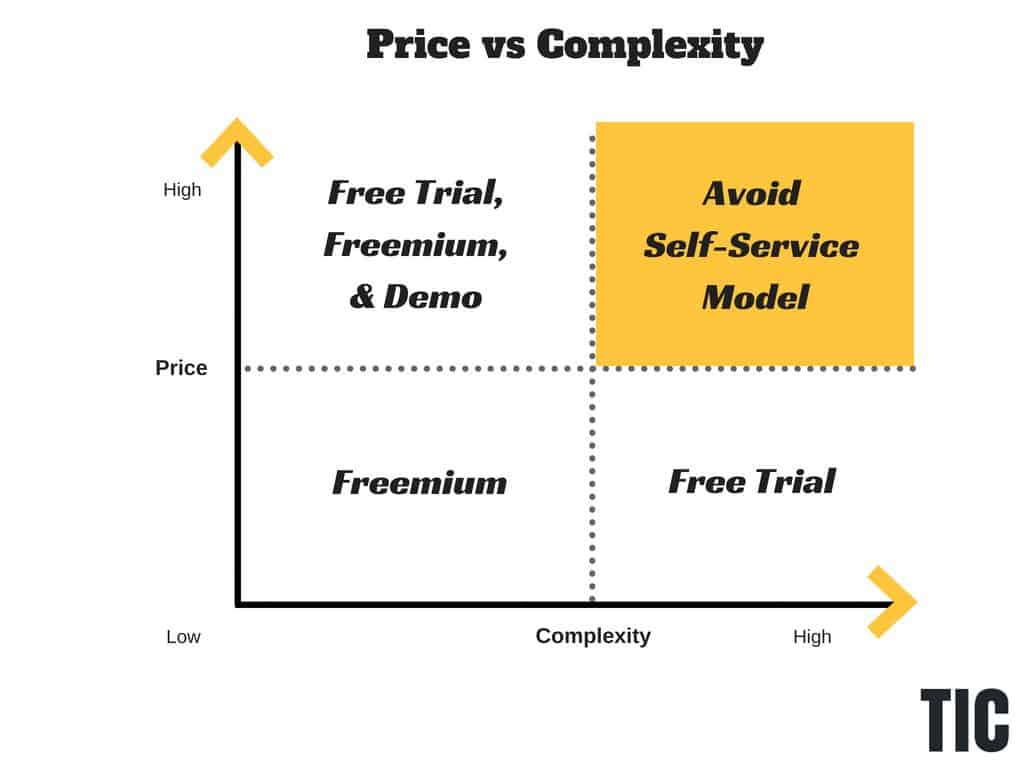
That said, if you don’t have a self-service model but think it might work for your SaaS business, you should read this article on identifying if you should have a free trial or a freemium model. This will save you countless hours and resources figuring out how to launch a world-class free trial or freemium model.
How to Convert More of Your Website Visitors?
Suppose you're having trouble with your signups in general. In that case, The ProductLed GTM System™ by Wes Bush includes nine essential components that enable predictable and profitable growth, whether running a 7-figure company or just getting started. And yes, it's completely free!
Alternatively, if you prefer one-on-one assistance implementing these components into your business, explore the ProductLed Coaching Program.

